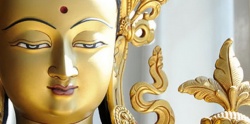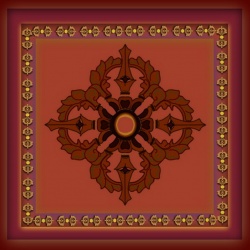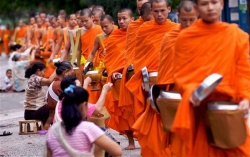How does Rebirth Occur
Rebirth Explanation - BY MAHASI SAYADAW
Over two thousand and five hundred years ago, the Lord Buddha taught about the process of continued existence from his own direct knowledge. There are three kinds of existence:
The existence having both mind and matter.
The existence having only matter.
The existence having mind only.
The existences having only matter or only mind can be known only through meditation (bhāvanā), they cannot be known by scientific experiments. However, if the manner of the mind-process in the existence having only mind is reflected on you can appreciate and understand the ability of mind. So the way to reflect is shown here in brief.
In the existence having mind only, mind (citta) arises and passes away without interruption from the moment of conception to the moment of death. The first citta arises and perishes and, without any interval, the second citta arises and perishes. Cittas continue arising and perishing in this manner so, after the disappearance of the former mind there is no base at all for the latter mind. However, the latter arises because of the impetus of the former. This is how the process of mind continues.
It is generally the case when thinking deeply that thoughts go on occurring without any interruption by ear-consciousness (sota viññāna), even though there are probably sounds at the time. So we can understand that it is the same in the case of existences having mind only. If we realise how the impetus of the preceding minds cause the arising of the following minds even before death, we can also understand that after death the rebirth-consciousness (patisandhi-viññāna) appears due to the mental impetus of the past existence, whether there is a physical base in the next existence or not. In other words, the decease-consciousness of the past existence causes the rebirth-consciousness of the next. This is a brief explanation to enable one to gauge the power of the mind.
Although both the mentality and materiality of a being perish at the moment of death, a new mind appears in the new body of the next existence through the impetus of the decease-consciousness. This citta clings to a certain object in the dying moment. This is known as death-proximate kamma (āsanna kamma ). The death-proximate kamma is the bridge between death and rebirth, which is how rebirth-consciousness occurs.
When death is very near, the wholesome or unwholesome deeds one has done may appear before one's mind's eye. Objects associated with those deeds may also appear. Alternatively, there may be a vision of one's destiny. Although such objects may not be wanted, they cannot be eliminated at the moment of death. Among those who are seriously ill and in a coma, some behave strangely. Some show signs of pleasure and joy, others behave as if they are frightened or facing danger. Those who are close to the dying person usually report such events. Some people who were close to death, recover and then reveal who took them, where they went to and what they saw. At the very moment of the decease-consciousness (cuticitta), the person dies with his or her mind on one of the three signs. Death means the expiry of the last life-continuum. As soon as the decease-consciousness ceases, the rebirth-consciousness arises from the impetus of the decease-consciousness. The rebirth-consciousness arises in a new body in the next existence conditioned by the sign seen just before death. Because of this relationship with the previous existence this rebirth-consciousness is called relinking-consciousness (patisandhi citta).
To give an example: A man dreams of strange events and goes on thinking about them when he wakes up. The strange dream is like the object that one clung to in the past. Remembering his dream is like the object of rebirth consciousness. The above case is also like remembering an intention to do something when one wakes up.
If the rebirth consciousness arises in the fine-material plane (rūpabhūmi), its associated matter arises simultaneously due to kamma. If the rebirth-consciousness arises like this, eye-consciousness, ear-consciousness, nose-consciousness, tongue-consciousness, body-consciousness and mind-consciousness also arise accordingly. This, in brief, is how a being is reborn.


